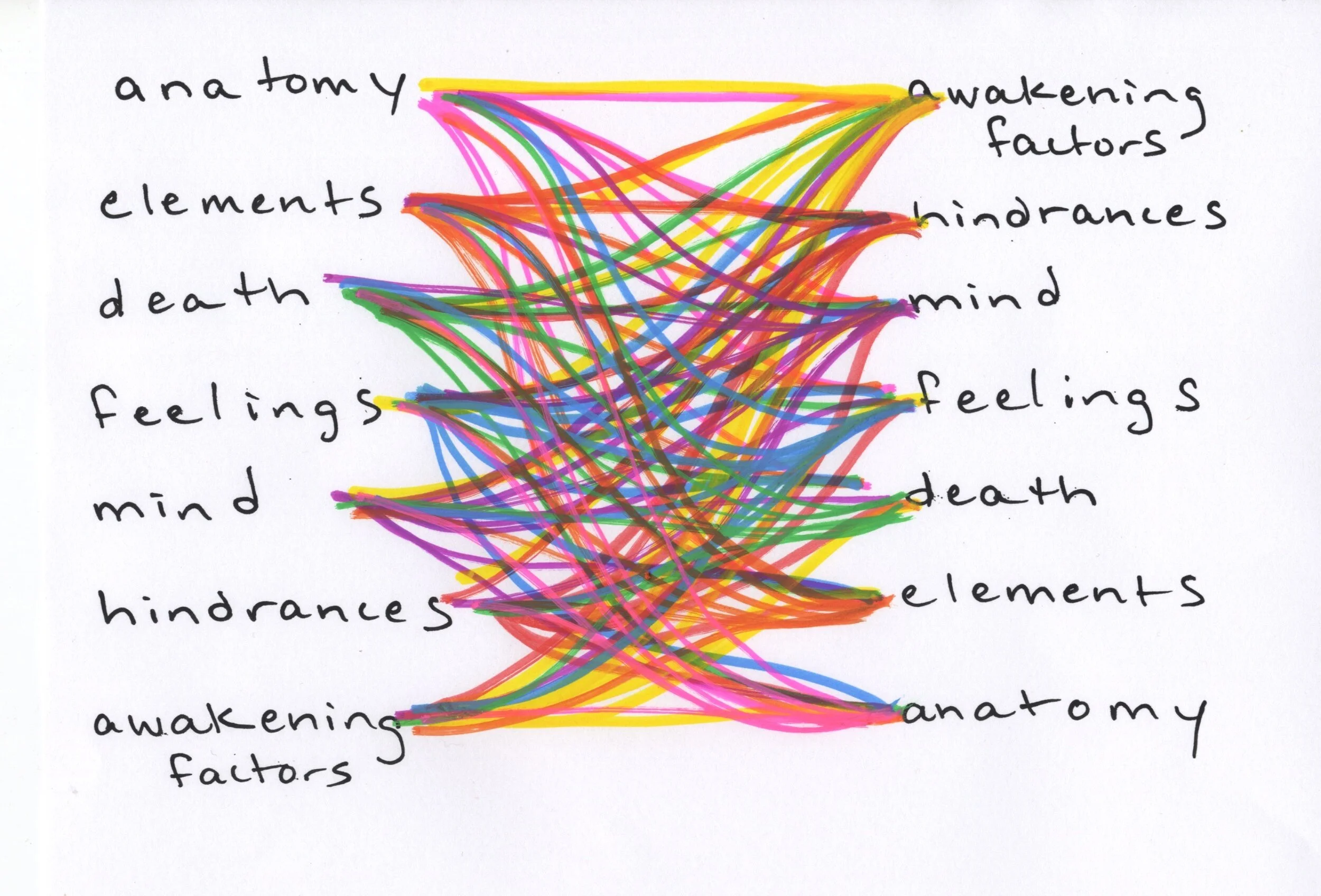Satipatthana Meditation Resources
These resources are based upon my interpretation of Venerable Analayo’s recent publication Satipatthana Meditation: A Practice Guide and course on his beautiful choreography of the practice.
The Four Satipatthana (in Yellow) are Body, Feelings, Mind, and Dhammas.
The wheel is a beautiful representation of the satipatthana practice:
Hub: Embodied Mindfulness
Spokes: The seven satipatthana contemplations. Each can be focused on individually to connect embodied mindfulness to dwelling independently OR they can all be practiced in sequence to serve your needs.
Rim: Dwelling independently without clinging to anything.
Open and closed Lotus Blossom: your practice should be seamless, you are still a beautiful lotus and practicing whether open or closed.
Closed: off-the-cushion
Open: on-the-cushion
Bowl of clear water: Clear Mind
Torch: The flame of desire. The flame must be handled carefully so that you do not get burned.
Bell, Bee and Hawk: Similes for vitakka and vicara, most often defined as directed and sustained attention. Another, useful, definition is pondering or thinking but thinking about what you are doing in your meditation practice, not proliferating thought about other things :).
Mindfulness is to be fully aware of what is happening NOW. It is receptive, inclusive, and it is about we-ness vs. I-ness. Being mindful increases your ability to remember events after they happen. It is like seeing the world with a wide-angle lens.
Anchor: The body is a somatic anchor to help create an integrated whole and seamless practice. It is what keeps you connected to yourself and to everything outside of you (it contains all of the sense gates and is basically a receiver/antennae). This embodied mindfulness carries you through all bodily postures (walking, standing, sitting, and lying down) as well as all bodily activities. Embodied mindfulness is a felt physical presence(proprioception) of the body as a whole. It is the bridge between your practice on-the-cushion and off-the-cushion and what creates a continuum.
Key aspects of the satipatthana practice from the definition and refrain:
diligently contemplate internally and externally.
clearly know arising and passing away.
be mindful just for the sake of knowing and being mindful.
remain free from desires and discontent so as to dwell independently, without clinging to anything.
Clear Mind
Hindrances
It is invaluable to understand our hindrances because they undermine our intentions and productivity in our practice. The aspect of conditionality moves to the foreground as we can begin to discern:
What led to the arising of the hindrance?
What is helpful to emerge from it?
What is helpful to prevent its occurrence?
MOST importantly: when is there no hindrance present? Is it not JOYFUL?
As you progress in the practice of the satipatthana contemplations, you will find that your ability to recognize the qualities of your experiences throughout the various lenses of each satipatthana becomes more facile. You may begin to see a hindrance through the lens of the elements. For example, I feel solid and warm when I feel angry. Or you might feel pleasant when you are free of the hindrances.
Establish your gocara-sampajanna, your pasture or domain of practice. Keep refreshing your intentions by using vittaka and vicara.





